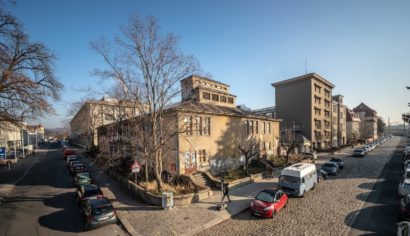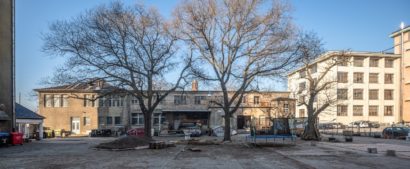Dresden (Goehle-Werk) Subcamp
October 9, 1944 – mid-April 1945
In October 1944, three subcamps for female prisoners were erected: two for the Zeiss Ikon AG (in Goehle-Werk and in Dresden-Reick), and one in the Universelle machinery factory.
![]()
Former Goehle-Werk Dresden, 2019 (Flossenbürg Concentration Camp Memorial / Photo: Rainer Viertlböck). Partly vacant, the factory building shows that consideration was given to the threat of air raids.
![]()
Former Goehle-Werk Dresden, 2019 (Flossenbürg Concentration Camp Memorial / Photo: Rainer Viertlböck).
-
Prisoners
Most of the women were Russian and Polish. Along with Germans and French, one woman from each of Italy, Yugoslavia, Luxembourg, and Czechoslovakia were forced to work in the Goehle-Werk. In April 1945, 684 female prisoners were there.
-
Forced labor and quarters
The women were quartered in the Goehle-Werk (Riesaer Straße). They were forced there to produce mainly munitions for the 8.8 cm anti-aircraft gun.
-
Guards
40 female overseers. Head overseer Margarete de Hueber was feared for meting out violent beatings.
-
Death toll
Two deaths were documented in November 1944. In January 1945, one woman was transferred to the Flossenbürg main camp and murdered.
-
Disbanding of the camp / end of the war
After the subcamp was disbanded, the prisoners were evacuated, taken by train, and forced to march by foot through the Elbe Valley. The prisoners were liberated before reaching their destination of Leitmeritz.
-
Commemoration
A memorial sign at the Heidestraße/Riesaer Straße, installed by the Christian-Jewish Society of the city Dresden.

